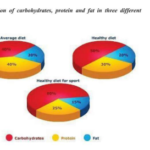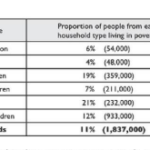The table compares the six networks in terms of their age, size and the number of
people who use them each year. It is clear that the three oldest underground systems
are largerand serve significantly more passengers than the newer systems.
The London underground is the oldest system, having opened in 1863. It is also
the largest system, with 394 kilometres of route. The second largest system, in
Paris, is only about half the size of the London underground, with 199 kilometres of
route. However, it serves more people per year. While only third in terms of size, the
Tokyo system is easilythe most used, with 1927 million passengers per year.
Of the three newer networks, the Washington DC underground is the most
extensive, with 126 kilometres of route, compared to only 11 kilometres and 28
kilometres for the Kyoto and Los Angeles systems. The Los Angeles network is
the newest, having opened in 2001, while the Kyoto network is the smallest and
serves only 45 million passengers per year.
185 Words
Estimated IELTS Band Score: 7.5 – 8.0
- Task Achievement: 7.5 – Clearly describes key data and makes comparisons, though some more nuanced contrasts could be highlighted.
- Coherence & Cohesion: 8.0 – Well-organized with logical progression of ideas.
- Lexical Resource: 7.5 – Good range of vocabulary, with room for slightly more variety.
- Grammar & Accuracy: 7.5 – Generally accurate grammar and sentence structures, with minor potential improvements.
Rewritten Essays
Band 8
The table presents data on the underground railway systems in six cities, including the date each system opened, its total route length, and the annual number of passengers.
Overall, the older systems in London, Paris, and Tokyo have longer routes and carry more passengers than the newer networks in Washington DC, Kyoto, and Los Angeles.
London, which opened in 1863, is both the oldest and the largest network, with 394 kilometers of track and 775 million passengers per year. Paris, opened in 1900, has about half the route length (199 km) but serves more passengers, at 1,191 million annually. Tokyo’s system, which began in 1927, has a shorter route (155 km) than Paris but carries the highest passenger load at 1,927 million.
Among the more recently built systems, Washington DC has the most extensive network, with 126 kilometers and 144 million passengers. Kyoto and Los Angeles have the smallest routes—11 km and 28 km respectively—and also the lowest ridership figures, at 45 million for Kyoto and 50 million for Los Angeles.
Word Count: 172
Band 9
The table compares six major cities’ underground railway systems in terms of their inauguration dates, total track length, and annual passenger numbers.
Overall, the data indicate that older networks (London, Paris, and Tokyo) tend to have longer routes and serve considerably more passengers compared to the newer systems (Washington DC, Kyoto, and Los Angeles).
London’s network, which opened in 1863, is both the oldest and the most extensive, spanning 394 kilometers and accommodating 775 million passengers each year. By contrast, Paris opened in 1900 with a route length of 199 kilometers but welcomes 1,191 million passengers annually, surpassing London in ridership. Tokyo’s system, inaugurated in 1927, is smaller at 155 kilometers but carries the largest passenger volume of all, at 1,927 million.
Among the more recent networks, Washington DC’s system, launched in 1976, is the longest at 126 kilometers, serving 144 million passengers per year. Kyoto, opened in 1981, has just 11 kilometers of track and 45 million annual users, while Los Angeles, established in 2001, covers 28 kilometers and transports 50 million passengers.
Word Count: 180
Comparison Table
| Aspect | Band 7-8 Version | Band 9 Version |
|---|---|---|
| Vocabulary | Clear and straightforward (“older systems,” “longer routes”) | More precise (“inauguration dates,” “accommodating 775 million passengers”) |
| Sentence Structure | Mostly direct and clear | Uses more varied and complex structures |
| Data Presentation | Covers key data and comparisons well | Offers sharper contrasts and more explicit references to figures |
| Clarity & Cohesion | Well-organized with logical flow | Slightly more refined transitions and concluding statements |
Examples from Essays
| Aspect | Band 7-8 Example | Band 9 Example |
|---|---|---|
| Sentence Structure | “Among the more recently built systems, Washington DC has the most extensive network, with 126 kilometers and 144 million passengers.” | “Among the more recent networks, Washington DC’s system, launched in 1976, is the longest at 126 kilometers, serving 144 million passengers per year.” |
| Data Presentation | “Tokyo’s system… has a shorter route (155 km) than Paris but carries the highest passenger load at 1,927 million.” | “Tokyo’s system, inaugurated in 1927, is smaller at 155 kilometers but carries the largest passenger volume of all, at 1,927 million.” |
| Clarity & Cohesion | “Overall, the older systems in London, Paris, and Tokyo have longer routes and carry more passengers than the newer networks.” | “Overall, the data indicate that older networks (London, Paris, and Tokyo) tend to have longer routes and serve considerably more passengers.” |
Grammar Mistakes
- Original: “The London underground is the oldest system, having opened in 1863. It is also the largest system, with 394 kilometres of route.”
Correction: No major errors here, but you can combine into a single sentence for variety:
“The London underground, opened in 1863, is both the oldest and largest system, spanning 394 kilometres of track.” - Original: “Paris is about half the size of the London underground, but serves more people, with 1,191 million passengers.”
Correction: “Paris’s route length is roughly half that of London’s (199 km), yet it serves more passengers, at 1,191 million annually.” (More precise phrasing.) - Original: “While only third in terms of size, the Tokyo system is easily the most used.”
Correction: “Although Tokyo’s system ranks third in size, it has the highest usage, at 1,927 million passengers per year.” (Adds the actual figure for clarity.)
Vocabulary Repetition
| Repeated Word | Suggested Alternatives |
|---|---|
| “System” | Network, Network infrastructure, Service |
| “Passengers” | Riders, Users, Commuters |
| “Route” | Track length, Rail lines, Extent of rail coverage |
IELTS Writing Task 1 Exercises with Answers
Fill in the blanks using the words below:
(accommodates, inauguration, extent, surpass, significantly)
- The table compares six major cities’ underground railway systems in terms of their _______ dates, total track length, and annual passenger numbers.
Answer: inauguration - London’s network is the oldest and the most extensive, spanning 394 kilometers and _______ 775 million passengers each year.
Answer: accommodates - Paris’s route length is about half that of London’s, yet it serves _______ more passengers, at 1,191 million.
Answer: significantly - Tokyo’s system, though smaller in _______ than London’s, carries the highest number of passengers, at 1,927 million, which _______ all other networks.
Answer: extent; surpass


